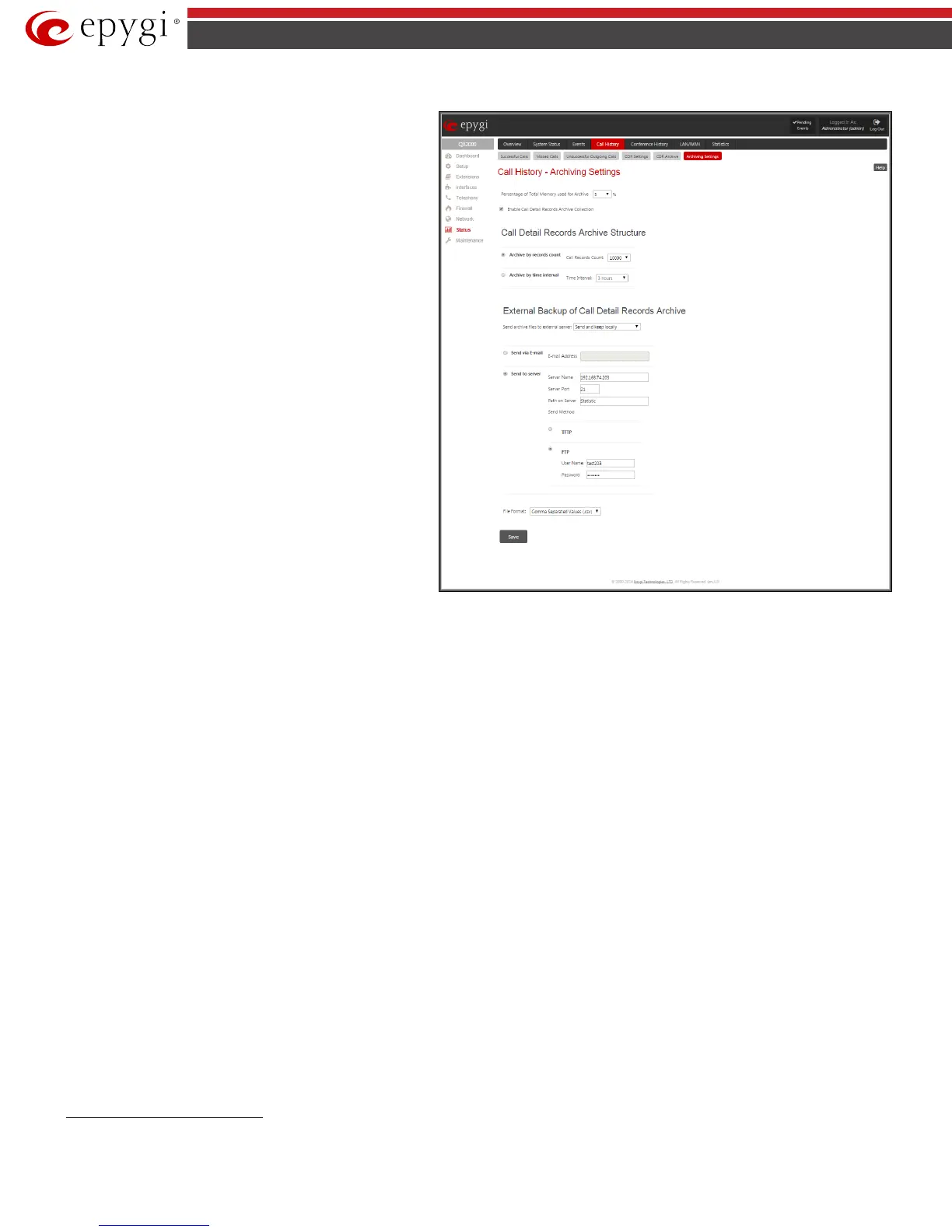QX50/QX200/QX2000; (SW Version 6.0.x) 153
QX50/QX200/QX2000 Manual II: Administrator’s Guide
Archiving Settings
Archiving Settings
page is used to configure the automatic
archiving of the Call History.
The Percentage of Total Memory used for Archive drop-down
list is used to select the internal memory space (in percents) that
can be used for storing the archived Call History. When the
required memory exceeds the size entered, the oldest entries are
being automatically deleted.
The Enable Call Detail Records Archive Collection checkbox
enables automatic downloading mechanism of the Call History.
Please Note: This service only refers to the statistics collected
from the moment of enabling this service and forward; any
previously generated statistics will not be downloaded.
The Call Detail Records Archive Structure is used to configure
the intervals for archiving the Call History. The archiving structure
allows to archive the Call History either by time intervals or per
statistics record count:
The Call Records Count drop down list is used to select the
portion size of the Call History (including all types of call statistic,
i.e. successful, missed and unsuccessful outgoing Call History)
which will be archived locally. The number selected in this drop
down list indicates the number of entries in the single archived
Call History file. If there are no enough entries in the Call History
table on the QX IP PBX, the system will wait until the necessary
number of entries will be collected and then will archive the
statistics file.
The Time Interval drop down list is used to select the time
interval by which the Call History will be archived locally. After
each time interval the system will archive the Call History
(including all types of call statistic, i.e. successful, missed and
unsuccessful outgoing Call History). If there are no any record
made during last time interval the black file is archived.
Fig.II- 250: Call History – Archiving Settings page
The External Backup of Call Detail Records Archive is used for configuring the Call History backup service.
The Send archive files to external server is used to enable/disable the backup service and configuring whether the statistics should be kept locally after
backing up them.
Two options of the Call History backup are available: uploading the Call History file to the server or sending it to the mailing address.
The following group of manipulation radio buttons allows you to select whether the Call History files will be delivered by email or stored in some location
on the server:
• The Send via Email radio button is used to send the Call History files via email. The selection enables Email Address text field that requires the
email address of the administrating person to receive the Call History files.
• The Send to Server radio button is used to store the Call History files on a remote server. This selection enables the following fields to be
inserted:
o The Server Name requires the IP address or the host name of the remote server.
o The Server Port requires the port number of the remote server.
o The Path on Server requires the path on the server to store the Call History files in.
The Send Method manipulation radio buttons allow you to select the remote server type: TFTP or FTP. In case of FTP selection, the authentication
username and the password need to be inserted. In case if these fields are left empty, anonymous authentication will be used.
The File Format drop down list is used to select the format in which Call History will be saved. This list offers to choose between Tab Delimited Text (.log)
and Comma Separated Values (.csv) file formats.
To Enable/Disable the Call History
1. Enter the Call History Settings page.

